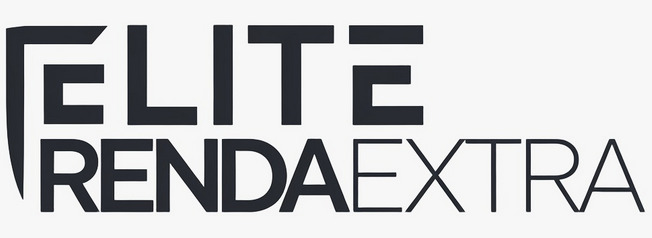Navigating the world of finance can sometimes feel overwhelming, especially when you’re looking for ways to fund significant expenses or manage existing debt. One of the most versatile tools available to consumers is a personal loan, offering a straightforward way to access funds when you need them.
This guide aims to demystify personal loans, exploring how they work, their benefits, potential drawbacks, and how you can determine if this financial product is the right choice for your unique circumstances. Understanding these loans can empower you to make informed decisions that align with your financial goals.
What Exactly is a Personal Loan?
At its core, a personal loan is an amount of money borrowed from a financial institution—like a bank, credit union, or online lender—that you agree to repay over a set period. These repayments, often called installments, typically include a portion of the principal amount borrowed plus interest. Most personal loans are “unsecured,” meaning they don’t require you to put up collateral (like your house or car) to guarantee the loan. However, “secured” personal loans, which do require collateral, also exist and may offer different terms.
The beauty of a personal loan lies in its predictability. You’ll know your monthly payment amount and the total duration of the loan from the outset, making it easier to budget for. This contrasts with other forms of credit, like credit cards, which can have fluctuating payments depending on your balance and interest rate changes.
Unpacking the “Flexible” in Flexible Financing
The term “flexible financing” is often associated with personal loans, and for good reason. This flexibility manifests in several key ways, making them adaptable to a wide array of financial needs and situations.
Versatility in Loan Purpose
Unlike mortgages (for homes) or auto loans (for cars), personal loans generally don’t restrict how you use the funds. This is a significant advantage. Common uses include:
- Debt Consolidation: Combining multiple high-interest debts (like credit card balances) into a single loan, often with a lower interest rate.
- Home Improvements: Financing renovations, repairs, or upgrades to your property.
- Major Purchases: Covering the cost of appliances, electronics, or even a wedding.
- Medical Expenses: Paying for unexpected medical bills or procedures not fully covered by insurance.
- Emergency Funding: Addressing unforeseen financial crises, such as urgent car repairs or job loss.
- Travel or Education: Funding a significant trip or educational courses.
This wide range of applications means a personal loan can be a solution for many different life events and financial goals.
Adaptable Repayment Terms
Lenders typically offer a variety of repayment periods for personal loans, often ranging from one to seven years, or sometimes even longer. A shorter loan term means higher monthly payments but less interest paid overall. Conversely, a longer term results in lower monthly payments but more total interest over the life of the loan. This choice allows you to select a repayment schedule that best fits your monthly budget and long-term financial plan.
Varying Loan Amounts
Personal loans can cater to a broad spectrum of borrowing needs. You might find loans available for as little as $1,000 or as much as $50,000, or even $100,000 from some lenders, depending on your creditworthiness and the lender’s policies. This range allows you to borrow an amount that precisely matches your requirements, avoiding over-borrowing.
Types of Personal Loans: Finding Your Fit
Understanding the different types of personal loans available can help you choose the one that best suits your financial profile and needs.
Unsecured Personal Loans
These are the most common type. As mentioned, they don’t require you to pledge any collateral. The lender approves the loan based on your creditworthiness, income, and other financial factors. Because the lender takes on more risk, interest rates for unsecured loans might be slightly higher than for secured loans.
Secured Personal Loans
Secured personal loans require you to offer an asset (like a savings account, car, or other valuable property) as collateral. If you default on the loan, the lender can seize the collateral to recoup their losses. This reduced risk for the lender often translates into lower interest rates or more favorable terms for the borrower, especially for those with less-than-perfect credit.
Fixed-Rate vs. Variable-Rate Loans
Most personal loans come with a fixed interest rate. This means your interest rate, and therefore your monthly payment, remains the same throughout the loan term. This predictability is highly valued for budgeting.
Some lenders might offer variable-rate loans, where the interest rate can fluctuate based on changes in a benchmark index rate. While these might start with a lower initial rate, your payments could increase if interest rates rise, making them less predictable.
Key Advantages of Opting for a Personal Loan
Personal loans come with several benefits that make them an attractive financing option:
- Predictable Payments: With fixed interest rates and set repayment terms, you know exactly how much to pay each month.
- Potentially Lower Interest Rates: Compared to credit cards or payday loans, personal loans often offer more competitive interest rates, especially for borrowers with good credit.
- Versatility of Use: Funds can be used for almost any legitimate purpose.
- No Collateral Required (for unsecured loans): You don’t risk losing an asset if you’re unable to repay an unsecured loan (though your credit score will be significantly impacted).
- Lump-Sum Disbursement: You receive the full loan amount upfront, allowing you to make your large purchase or consolidate debts immediately.
- Can Improve Credit Score: Making timely payments on a personal loan can positively impact your credit history and score over time.
Potential Downsides and Considerations
While personal loans offer many advantages, it’s crucial to be aware of potential drawbacks:
- Interest Costs: You’ll pay interest on the amount borrowed, increasing the total cost.
- Fees: Some lenders charge origination fees (a percentage of the loan amount, deducted from the proceeds), late payment fees, or prepayment penalties (though less common). Always read the fine print.
- Impact on Credit Score: Applying for a loan can result in a hard inquiry on your credit report, temporarily lowering your score. Missed payments will significantly damage your credit.
- Risk of Debt Accumulation: If not managed responsibly, a personal loan can add to your overall debt burden.
- Qualification Requirements: Approval isn’t guaranteed and depends heavily on your credit score, income, and debt-to-income ratio.
Navigating the Personal Loan Application Process
Securing a personal loan involves several steps. Being prepared can make the process smoother and increase your chances of approval with favorable terms.
Step 1: Assess Your Financial Health
Before applying, check your credit report for any errors and get an idea of your current understanding your credit score. Review your budget to determine how much you can comfortably afford in monthly payments.
Step 2: Determine How Much You Need
Borrow only what you truly need. A larger loan means higher payments and more interest paid. Having a clear purpose and amount will help you focus your search.
Step 3: Shop Around and Compare Lenders
Don’t settle for the first offer. Compare interest rates, fees, loan terms, and eligibility requirements from multiple lenders, including:
- Banks
- Credit Unions (often offer competitive rates to members)
- Online Lenders (can offer quick approval and funding)
Many online lenders offer pre-qualification with a soft credit check, which won’t impact your credit score, allowing you to see potential rates. Pay close attention to the understanding Annual Percentage Rate (APR), which includes interest and some fees, for a true comparison of costs.
Step 4: Gather Necessary Documentation
Lenders will typically require:
- Proof of identity (e.g., driver’s license, passport)
- Proof of income (e.g., pay stubs, tax returns, bank statements)
- Proof of address (e.g., utility bill)
- Social Security number
- Details about your employment
Step 5: Submit Your Application
Once you’ve chosen a lender, complete the formal application. Be honest and accurate with all information provided. The lender will perform a hard credit inquiry at this stage. If approved, you’ll receive the loan agreement to review and sign before the funds are disbursed.
Factors Influencing Your Personal Loan Eligibility and Terms
Several factors determine whether you’re approved for a personal loan and what interest rate and terms you’ll receive:
Credit Score and History
This is often the most critical factor. A higher credit score generally indicates lower risk to the lender, leading to a higher chance of approval and better loan terms (lower interest rates). A history of on-time payments and responsible credit use is key.
Income and Employment Stability
Lenders need assurance that you have a stable and sufficient income to make the loan payments. They’ll look at your employment history and current income level.
Debt-to-Income Ratio (DTI)
Your DTI compares your total monthly debt payments to your gross monthly income. A lower DTI suggests you have more disposable income to handle new debt. Lenders have maximum DTI thresholds for approval. It’s wise to calculate your DTI before applying.
Making the Most of Your Personal Loan
Once you’ve secured a personal loan, responsible management is key. Create a budget that incorporates your new loan payment. Set up automatic payments if possible to avoid missing due dates. Try to pay more than the minimum if your budget allows, as this can save you interest and shorten the loan term (if there are no prepayment penalties). Avoid taking on additional unnecessary debt while you’re repaying the loan.
Comparing Personal Loan Options: A Quick Guide
Here’s a simple table to help you compare common loan characteristics:
| Feature | Unsecured Loan | Secured Loan | Fixed-Rate Loan | Variable-Rate Loan |
|---|---|---|---|---|
| Collateral | Not required | Required (e.g., car, savings) | N/A | N/A |
| Interest Rates | Generally higher | Generally lower | Stays the same throughout the loan | Can change based on market rates |
| Risk to Borrower | Lower (no direct asset loss for default, but credit damage) | Higher (collateral can be seized) | Predictable monthly payments | Potentially unpredictable payments |
| Approval Ease (especially with fair/poor credit) | Can be more difficult | May be easier to qualify for | Most common type | Less common for personal loans |
| Best For | Good credit borrowers, no assets to pledge | Borrowers with assets, potentially lower rates | Budgeting and payment predictability | Borrowers comfortable with rate fluctuations |
When is a Personal Loan a Smart Choice?
A personal loan can be a very sensible financial tool in specific situations:
- Consolidating High-Interest Debt: If you have multiple credit card balances with high APRs, a personal loan with a lower interest rate can save you money and simplify payments. You can explore debt consolidation strategies with various tools.
- Financing a Necessary Large, One-Time Expense: For planned expenses like a significant home repair or a medical procedure, a personal loan can provide the needed funds with a structured repayment plan.
- Emergency Situations: When faced with unexpected, urgent costs and other options (like emergency funds) are exhausted or more expensive (like payday loans).
- Improving Your Credit Mix: Responsibly managing an installment loan like a personal loan can diversify your credit history, which can be beneficial for your credit score in the long run, provided all payments are made on time.
It’s generally not advisable to use personal loans for discretionary spending you haven’t budgeted for, investments, or business startups (unless specifically designed for that purpose), as there are often more suitable financial products for these needs.
Conclusion: Empowering Your Financial Journey
Personal loans offer a valuable combination of flexibility, fixed payments, and potentially lower interest rates compared to other credit forms, making them a powerful tool for managing your finances. By understanding how they work, assessing your own financial situation, and carefully comparing your options, you can make an informed decision that supports your goals.
Remember to borrow responsibly, ensuring the loan payments fit comfortably within your budget. For further information and to deepen your knowledge, understanding your personal loan options from reputable sources can provide additional guidance on making the best choice for your financial future.



